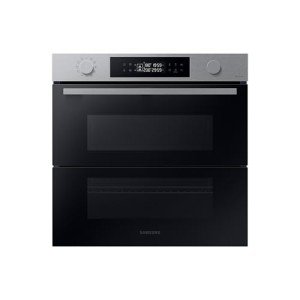The Future of Culinary Convenience: Integrated Ovens and Hobs
In the ever-evolving world of cooking area style, integrated ovens and hobs are at the leading edge of modern culinary innovation. These home appliances not only guarantee aesthetic appeal however also improve functionality and efficiency, changing how we prepare our meals. As property owners progressively seek to create seamless, trendy, and user-friendly cooking spaces, the combination of ovens and hobs uses a perfect service. This article explores what integrated ovens and hobs are, their benefits, and essential considerations for those wanting to update their kitchen area.
What Are Integrated Ovens and Hobs?
Integrated ovens and hobs are kitchen devices seamlessly built into the cabinets or counters, instead of standing apart as different entities. Integrated ovens are developed to blend into cooking area systems, offering a flush finish with surrounding cabinetry. Similarly, integrated hobs are mounted directly into the counter top, creating a streamlined appearance. This minimalist design method not only raises the aesthetic appeal of the cooking area however also takes full advantage of readily available area.
Kinds Of Integrated Ovens
Single Ovens: These standalone units are created for simpleness and ease of use, featuring a single cooking chamber and multiple cooking modes such as baking, grilling, and roasting.
Double Ovens: Ideal for bigger families or avid cooks, double ovens provide 2 independent cooking compartments, permitting numerous dishes to be prepared all at once at various temperatures.
Combination Ovens: Blending standard baking and steam cooking, combination ovens offer adaptability for different cooking requirements, retaining moisture while making sure completely cooked meals.
Kinds Of Integrated Hobs
Gas Hobs: These hobs enable exact temperature control and instantaneous heat, making them a favorite amongst professional chefs and cooking enthusiasts.
Induction Hobs: Known for their performance and safety, induction hobs use electro-magnetic energy to heat pots and pans directly. They are fast to heat and cool down quickly, minimizing the threat of burns.
Electric Hobs: Featuring smooth ceramic or glass surface areas, electric hobs are simple to clean and provide an even heat circulation for a variety of cooking designs.
Advantages of Integrated Ovens and Hobs
1. Space Optimization
With the pattern of smaller sized home and open-concept homes, integrated home appliances help make the most of cooking area space. By fitting effortlessly into kitchen cabinetry, kitchens can appear larger and more open, minimizing mess and improving visual appeal.
2. Visual Appeal
Integrated ovens and hobs offer a streamlined, modern-day appearance that fits well within numerous style themes. The capability to tailor cabinets guarantees that house owners can accomplish a cohesive appearance that matches their design, whether modern, conventional, or something in between.
3. Improved Functionality
Integrated devices typically come with advanced features such as clever technology, self-cleaning choices, and various cooking modes. These enhancements not only improve the cooking process but also enhance functionality, making cooking an enjoyable experience.
4. Security Features
Integrated hobs, specifically induction models, are considered safer than conventional cooking surface areas. They cool down quickly, lowering the risk of burns, and frequently include features like child locks and automated shut-off for additional safety.
Key Considerations When Choosing Integrated Ovens and Hobs
1. Space and Layout
Before purchasing integrated devices, consider the space offered in your kitchen area. Procedure the cabinets and countertops carefully to ensure a best fit, permitting for sufficient ventilation and installation space.
2. Cooking Needs
Assess your cooking practices and preferences. If you frequently entertain or prepare large meals, a double oven may be the best choice. On the other hand, if you're a periodic chef, a single oven might be enough. Similarly, picking between built in oven to buy , electric, or induction hobs will depend upon your cooking design and comfort level.
3. Energy Efficiency
With increasing energy costs and growing ecological concerns, deciding for energy-efficient devices can save cash in the long run. Look for products with high energy ratings and features like programmable timers and eco-modes.
4. Quality and Brand
Buying top quality home appliances from trustworthy brands guarantees sturdiness and performance. Checking out customer reviews and looking for recommendations can help limit the very best choices customized to your needs.

Conclusion
Integrated ovens and hobs are more than simply kitchen area devices; they represent a shift towards a more practical, trendy, and efficient technique to cooking. As house owners focus on seamless style, convenience, and advanced features, these integrated solutions will certainly form the kitchens of tomorrow. Whether renovating a kitchen or creating a new one from scratch, integrating ovens and hobs is a financial investment that assures to improve both culinary experiences and the general visual of the home.
